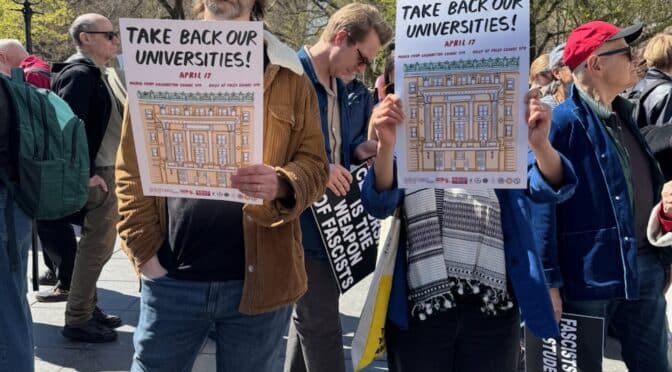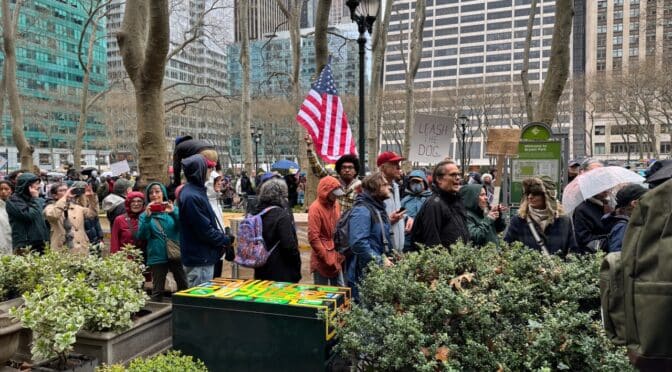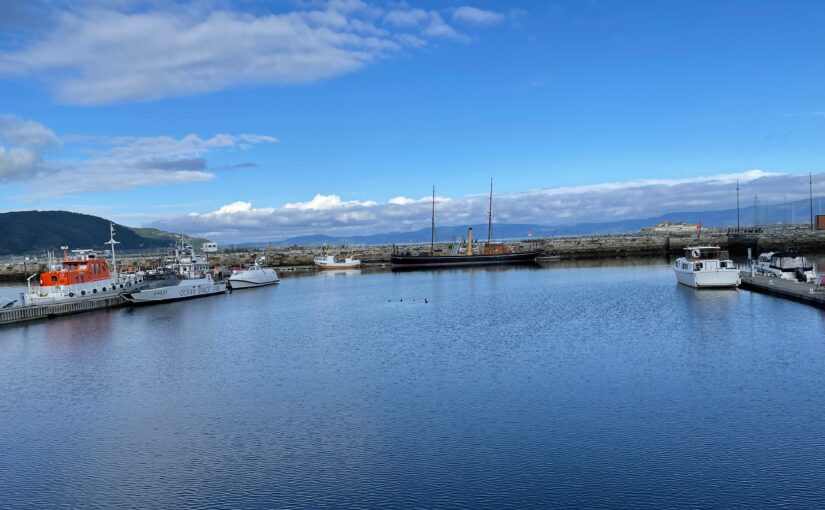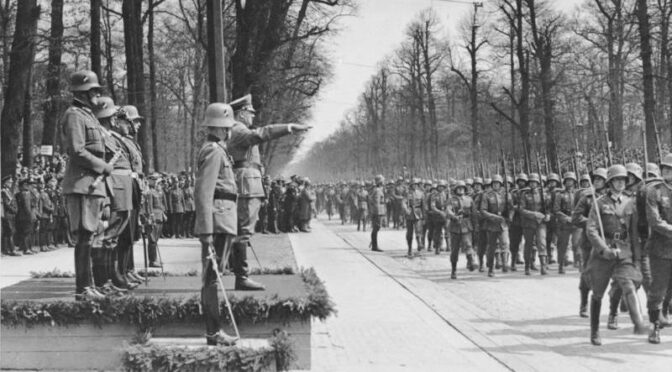by Nick Taylor and Barbara Nevins Taylor
It was an intense winter and spring of work, and a country and world filled with grim news. We procrastinated about making plans for a summer trip until late May and then we realized the clock was ticking. We sat down on a Sunday afternoon and started mapping out a trip to begin the second week of June.
We longed for a vacation that was different, something that would take us out of our phones and our worrying heads. The headline here is Rome, but that turned out to be a first stop on a trip through history, mosaics, art and culture and fantastic food that took us from Rome to Italy’s boot heel over three amazing weeks.

We booked our flights through American Express Travel and they set us up with a flight to Rome via Munich on Lufthansa, which had affordable business class seats. Lufthansa is a member of the Star Alliance , a group of 25 airlines that includes United Airlines and Swiss. Like other airline groups it offers mutual benefits including priority check-in and lounge privileges, which in an age of airline delays is helpful.
Beyond New York, Rome is Barbara’s favorite city because it is a walker’s paradise. You wander from piazzas to winding streets filled with small centuries-old details like the 17th century Fontana del Mascherone on the Via Giulia .

Or, you step into the Piazza Navona and fall in love all over again with the great Bernini sculptures, the Fountains of Four Rivers.
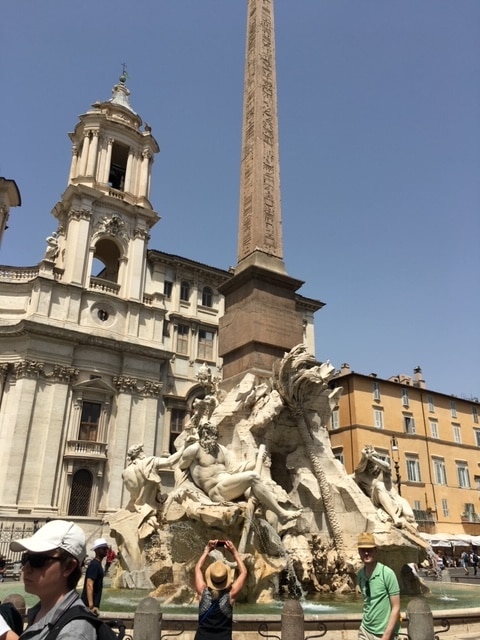
Or, you turn a corner in a winding back street and find beauty in the way a homeowner has added to a centuries old building.

Rome is where you go to buy a book, then cross the street and discover that you are at Largo Torre Argentina, where Julius Caesar was assassinated in the Curia of Pompey. It helped, of course, that both of us were reading the Robert Harris trilogy about Cicero and Imperial Rome. Our reading gave us a peculiar feeling of connecting and made the history come alive during our walks.

Rome, even overflowing with summer tourists, was filled with the possibility of new discoveries.
We stayed at the small and lovely Hotel Ponte Sisto, a former monastery on the Via dei Pettinari close to the Tiber River in Rome’s Centro Storico. Our small suite with a bedroom and sitting room opened onto a terrace.

And there was a pretty garden where the hotel served breakfast and you could kick back and feel as though Rome was your own.

The touristy streets nearby even felt familiar, much like our neighborhood at home, New York’s West Village. Barbara had dipped into her memory to book tables at restaurants we’d enjoyed on previous Roman holidays.

That first night, we returned to a favorite, Pierluigi, in the Piazza de’ Ricci about a ten minute walk from the hotel. It’s a seafood restaurant that’s been around since 1938. We approached to find a large crowd in the piazza enveloped in the sounds of a heavy beat maker. They were there for an art opening and it seemed like everyone was having a great time. We sat at an outside table and let the atmosphere wash over us.


The food here is wonderful and that’s why it attracts a crowd of locals, business people and tourists like us.
We started with tagliatella di calamari con gazpacho all’amatriciana.

And a wild octopus salad.

We shared a pasta course of linguine, wild fennel and tuna n’djua.

We went on to sea bass baked in salt, which a server expertly deboned away from our table. It was a good thing that we had a nice walk down the Via Guilia back to the hotel.
The next day, we stopped at the nearby Campo de’ Fiori to see the produce available in June.

Tourists are so ubiquitous here that vendors place no-touching signs and make the point that they don’t care if it’s for a selfie, or an Instagram story.
All the coverage of the election and installation of Pope Leo XIV made us want to visit the Sistine Chapel. Both of us had visited years ago in other lives and it seemed right to visit again.

We booked with Tours Guys and were told to meet opposite the main entrance to the museum on the steps across the street.

The area was packed and we got there a little early. So we wandered around the corner and stepped into an air-conditioned grocery story. We were shocked to find prices for groceries were cheaper than in the U.S. Apparently no price gouging here.


That was especially true of Italian wines. But then….

Huffing with indignation at how ripped off we seem to be in the U.S., we headed to meet our tour guide. We had signed up for a three-hour tour of the Vatican Museum, the Sistine Chapel and St. Peter’s Basilica. The tour allowed us to skip the line with our small group and head inside.

The double helix Bramante Staircase, designed in 1932 to replace the 1505 original, is the first beautiful thing you see.

The original was designed so that Pope Julius II could ride in his carriage to his private residence rather than walk.
Our guide Francesco Quirizi was extremely knowledgable. He’s holding a bunch of radio headsets that he gave out that allowed us to hear what he had to say.

The red flag helped our small group spot him in the crowd.

Francesco led us and gave us the backstory on key pieces in the collection.

Among the many beautiful works of art there are showstoppers including the Hercules Mastai. The gilded bronze statue dates to between the 1st and 3rd centuries AD, and was found buried beneath the courtyard of a palazzo near the Campo de’ Fiori in 1864.

In the same room, the Round Hall, there is a giant red-purplish porphyry tub that the Vatican Museum believes may have been in a public square during the days of Imperial Rome. It sits in the middle of a spectacular set of 3rd century AD mosaics from Otricoli and Sacrafano, which were dug up and put back together in the museum in the 18th century.

This overwhelmingly beautiful collection got its start with Pope Julius II in 1506. Artists including Michelangelo encouraged him to acquire the Laocoön, which workers found buried in a vineyard. Pliny the elder described the sculpture in the second half of the 1st century AD when he saw it in the palace of the Emperor Titus.

In case you are wondering: The statue is of the Trojan priest who warned his countryman not to trust the Greeks’ wooden horse. The story goes that Athena and Poseidon, who favored the Greeks, sent serpents to kill the priest and his sons.

Pope Julius added more statues to connect the idea of Imperial Rome with the papacy and created the Courtyard of Statues that included the Belvedere Apollo.

Wikipedia suggests that Julius was a collector before he became Pope. He apparently acquired the Apollo, that dates to the 2nd century AD, while he was an abbott. It felt rare and special, even with the all the other tourists, to stand inches from it and appreciate the artistry and skill.
Steps away, you have the same powerful experience with the statue of Arno or the river god that dates from the time of the Emperor Hadrian.

Our guide explained that the popes who followed Julius added to the collection. And in 1771 Pope Clement XIV opened it to the public, making it the first museum that anyone could visit. Today there is so much to see and appreciate and it is definitely worth a trip.

We had signed up to see the Sistine Chapel, but felt the museum offered a bonus.

We were not allowed take photos in the Sistine Chapel and there were other rules. Women had to cover their shoulders, everyone had to take off caps and hats, and our guide instructed us not to talk. Once inside you were elbow to elbow with other tourists who whispered, but definitely created a buzz about the spectacular works of art that surrounded us, especially the ceiling by Michelangelo depicting the stories in the book of Genesis.

To wind up the tour, we walked through St. Peter’s Square.


That led us up the ramp into St. Peter’s Basilica and the awe-inspiring beauty that has to make even the most jaded tourist smile.

After a walk about inside, we said goodbye to our guide and our group, including the beautiful Gelfi family from Winneteka, Illinois via Brazil and Miami.

That night, energized by all we had seen, we had dinner at Ditirambo, another more modest Roman favorite near the Campo de’ Fiori.

Alex, the maitre d’ and sommelier, greeted us warmly. Zucchini flower cakes started us off.

We followed it with cacio e pepe ravioli with truffles and then swordfish.

The next day, we still had a taste for art and headed to the Palazzo Barberini, once the home of Maffeo Vincenzo Barberini, who became Pope Urban VIII. It is now the Museum Barberini,
The cab driver who took us there spontaneously explained the way the streets were named: “They are named from the days of the popes, You know, the rich people,” he said, referring to the eras when some of the richest men in Rome had streets named for them and then became popes, including Barberini.
We had tried to get tickets to the Caravaggio show, but had missed out. Instead, we had the galleries almost to ourselves and enjoyed the other masterpieces on display.
The Annunciation by Fillipo Lippi was a favorite.

And so was Raphael’s La Fornarina.

We spent our last afternoon in Rome shopping and Barbara reconnected with Leo Limentani, a storeowner on the Via De Giubbonnari. She had met him in Frandi, his leather goods store, before the pandemic.

She had been profoundly affected by his family’s story, which is commemorated by four small plaques in the sidewalk outside 30 Via Giubbonnari, the building where he grew up and has his store.

In 1944 Italian fascists needing to fill a quota of arrests and kills took his grandfather David Limentari off and killed him. Then someone informed the fascists that his father, uncle and another man were hiding in the building. They were taken to Auschwitz and only his father returned. Today Leo, a proud resilient Roman, shares the story so that we all remember.

That night we had a passable meal in a restaurant we won’t name, and returned to the hotel rooftop for after-dinner Amari. Between sips we discovered a world of gardens among the buildings.

Rome! Always surprising and we wouldn’t be here long enough. The next day, we planned to head for the Sorrento coast and Pompeii.


